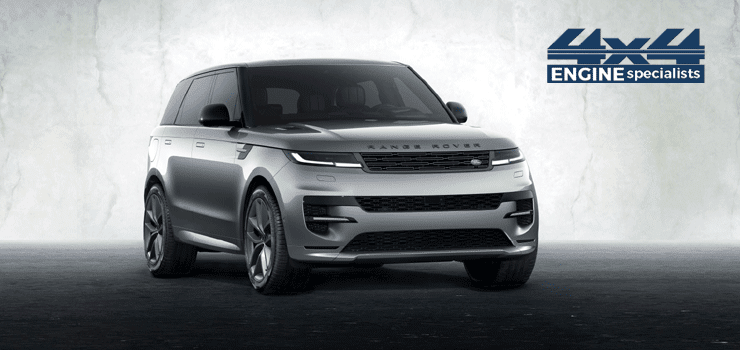The Range Rover, a symbol of luxury and rugged capability, has consistently set benchmarks in the SUV segment. The 2.0-liter engine variant, in particular, is a remarkable example of how modern engineering can balance performance with fuel efficiency. This engine variant, often seen in the Evoque and Velar models, combines innovative technologies and smart design to deliver both power and economical fuel consumption. We will delve into the key aspects that enable the Range Rover 2.0 engine to achieve this balance, covering everything from its design philosophy to the advanced features it incorporates.
The Design Philosophy Behind the 2.0 Engine
At the heart of the Range Rover 2.0 engine’s success is its design philosophy. The engineers aimed to create an engine that provides enough power for a premium driving experience while maintaining excellent fuel efficiency. This dual objective necessitated the integration of lightweight materials and compact design, which reduces the overall weight of the vehicle and improves fuel economy. The 2.0 engine is designed with an aluminum block and head, which not only lightens the engine but also aids in better heat dissipation, thus enhancing efficiency. Furthermore, the compact size of the engine allows for better aerodynamics, contributing to reduced fuel consumption.
Turbocharging and Direct Fuel Injection
One of the most significant advancements in the Range-Rover 2.0 engine is the use of turbocharging and direct fuel injection. Turbocharging helps increase the engine’s power output without significantly increasing its size or weight. By forcing more air into the combustion chamber, the engine can burn more fuel and produce more power. Direct fuel injection, on the other hand, involves injecting fuel directly into the combustion chamber at high pressure. This method improves fuel atomization and combustion efficiency, resulting in better power delivery and lower fuel consumption. Together, these technologies ensure that the 2.0 engine delivers robust performance while remaining fuel-efficient.
Variable Valve Timing for Enhanced Efficiency
Another critical technology in the Range Rover 2.0 engine is variable valve timing (VVT). VVT adjusts the timing of the opening and closing of the engine’s valves, depending on the driving conditions. By optimizing valve timing, the engine can improve its breathing, leading to more efficient combustion. This results in better power delivery and improved fuel efficiency across different RPM ranges. Whether cruising on the highway or navigating through city traffic, VVT ensures that the engine operates efficiently, reducing fuel consumption and emissions.
Start-Stop Technology
To further enhance fuel efficiency, the Range Rover Engine incorporates start-stop technology. This feature automatically shuts off the engine when the vehicle is stationary, such as at traffic lights or in heavy traffic, and restarts it when the driver presses the accelerator. By turning off the engine during idle periods, start-stop technology helps reduce fuel consumption and emissions. This is particularly beneficial in urban driving conditions, where stop-and-go traffic is common. The seamless operation of this system ensures that it does not compromise the driving experience while contributing to overall fuel savings.
Lightweight Construction and Aerodynamics
The lightweight construction of the Range Rover 2.0 engine is complemented by the vehicle’s overall design, which emphasizes aerodynamics. Reducing the weight of the engine and other components minimizes the energy required to move the vehicle, leading to better fuel efficiency. Additionally, the aerodynamic design of the Range Rover models helps reduce drag, further enhancing fuel economy. Features such as active grille shutters, which close when cooling is not needed, and streamlined body shapes contribute to improved aerodynamic performance. These design elements work in tandem with the lightweight engine to ensure optimal fuel efficiency without sacrificing performance.
Advanced Transmission Systems
The transmission system plays a crucial role in balancing performance and fuel efficiency in the Range Rover 2.0 engine. Modern Range Rovers equipped with this engine typically feature advanced automatic transmissions that are designed to provide smooth and efficient power delivery. These transmissions often include multiple gears, allowing the engine to operate at its most efficient RPM range for a variety of driving conditions. Features like adaptive shift patterns and torque converter lock-up further enhance efficiency by minimizing energy loss during gear changes. The result is a seamless driving experience that maximizes both performance and fuel economy.
Hybrid and Mild-Hybrid Variants
In addition to the conventional 2.0 engine, Range Rover offers hybrid and mild-hybrid variants that further improve fuel efficiency. These systems combine the 2.0 engine with electric motors to provide additional power and reduce fuel consumption. In a mild-hybrid setup, the electric motor assists the engine during acceleration and recovers energy during braking, which is then used to power auxiliary systems or provide a boost during acceleration. Full hybrid systems can operate on electric power alone for short distances, significantly reducing fuel consumption in urban driving conditions. These hybrid technologies exemplify Range Rover’s commitment to enhancing efficiency while maintaining the performance and luxury expected of the brand.
Intelligent Drivetrain Systems
Range Rover’s intelligent drivetrain systems also contribute to the balance between performance and fuel efficiency in the 2.0 engine models. Features like all-wheel drive (AWD) with intelligent torque distribution ensure that power is delivered to the wheels that need it most, improving traction and efficiency. Advanced traction control systems help optimize grip on various surfaces, reducing unnecessary power wastage and enhancing fuel economy. Additionally, drive modes tailored for different driving conditions, such as Eco mode, adjust throttle response, transmission shifts, and climate control settings to prioritize fuel efficiency without compromising the overall driving experience.
Conclusion
The Range Rover 2.0 engine exemplifies how modern automotive engineering can harmonize performance and fuel efficiency. Through a combination of lightweight materials, advanced technologies like turbocharging and direct fuel injection, and intelligent systems such as variable valve timing and start-stop technology, Range Rover has created an engine that meets the demands of discerning drivers while being mindful of environmental and economic factors. The integration of hybrid systems and intelligent drivetrains further enhances this balance, making the Range Rover 2.0 engine a benchmark in its class. As automotive technology continues to evolve, the principles applied in the Range Rover 2.0 engine will likely influence the design and development of future engines, driving the industry towards greater efficiency without sacrificing performance.


